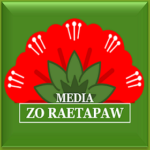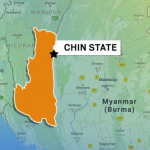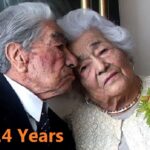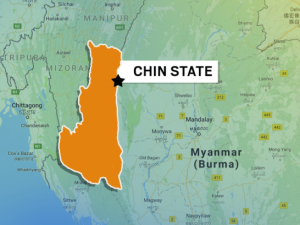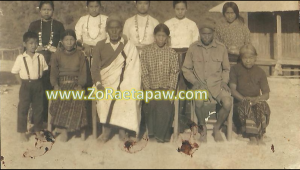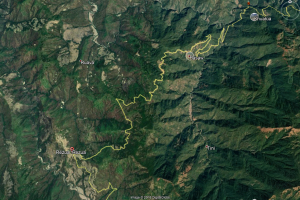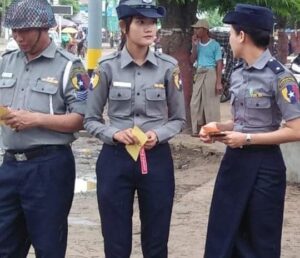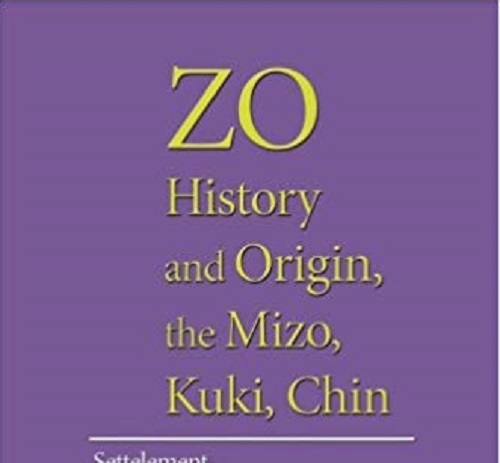
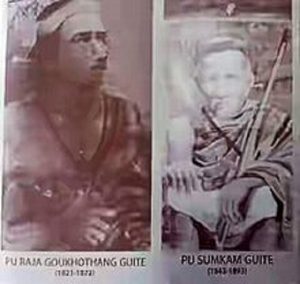 1. Chin
1. Chin
The Origins of Chin fell into three categories: pure myth, an alien name, and assumptions built on historical accounts which, nevertheless are alien – eponym as well.
(i) Pure myth
From the Ralte clan of the Mizo tribe in India, a legend was translated by J Shakespear in 1912: 93-94. “After a great darkness fell upon the world, people emerged from the bowels of the earth, at a rock called Chinlung.” It was from this rock the word Chin was derived. (In search of Chin Identity p5) This Chinlung legend is not known on Burma side but Khuul in Tedim and Lailun Cave in Falam are the only popularly known caves traditionally believed people were issued from.
Mythical as it was, the location of ‘Chinlung’ was only imagined by some authors to be in Tibet (cf Pu Gin Za Tuang 1973:7), somewhere in China (cf. Pu Zawla 1976,:2) or in Chindwin Valley (Pu Gangte1993:14) In Search of Chin Identity p 5, 9.
(ii) An alien name
The word Chin is an outright alien name, synonymous with Kuki and Lushai, used only by outsiders to identity the hill tribes. As far as history is concerned none of those who are designated Chins ever call themselves Chin. Even today, 120 years after Chin was arbitrarily imposed on them, people in villages, their core community, do not know what Chin is. It is what the Burmese call them. Is it acceptable to be officially identified as something you don’t even know?
(ii) Historical assumptions
(a) Prof. Gordon Luce wrote “The Burmese kings would leave the hill tribes in sole possession of their lands. apparently serving as a buffer between them and their enemies, Manipur and Tripura. The kings, therefore, originally referred to the tribes as ‘comrades’ or ‘allies’, (thu nge chin = friends)”, (F K Lehman, Chin National Journal p 93). Hence the appearance of the word Khyan (Chin) on two stone inscriptions at Pagan (1084-1113.Luce 1959). This is, however, challenged by some historians. The Burmese Encyclopedia, though, defined Chin as ‘ally’ in 1950.
(b) Carey and Tuck assumed that the term Chin was the Burmese corruption of Chinese “jin” or “jen” meaning ‘man’ or ‘people’. Carey and Tuck 1976,3. Whatever the etymology Chin is, after all, alien and extrinsic and neither is it national.
The Drawback
‘Chin’ is often disparagingly refereed, time and time again, to ‘basket’ for its phonetic similarity in Burmese — a daily experience! The Chin Soccer Team has often been greeted with boos and jeers, at the Inter-States and Divisions Soccer Tournament in Yangon with the crowds showing baskets hoisted aloft.
In addition it was ridiculous that just recently (in November 2015) the memorable appointment of Pu Henry Van Thio to a vice presidency of the new democratic NLD government, despite the great appreciation and welcome by the people, was depicted as a ‘basket’ and posted on Facebook. Being a Chin, no matter how high your position in the government hierarchy you are not immune to such derogatory abuses. This clearly shows that it is pretty much a fact that there is still social stigma attached to the appellation with contempt.
According to Lehman, “Chin’ has come to be associated in the minds of many of the people with the contemptuous Burman view of the peoples of these uplands that (it) links the word ‘Chin’ however incorrectly with ‘basket’ “. FK Lehman, (ZOLUS, 2016-17 p204).
Distorted Representation – a Conjecture at Best
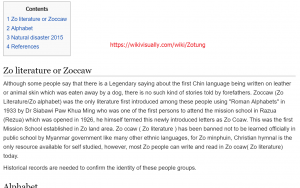 While, as far back as written history witnessed, they called themselves Zo, (and its cognates – Cho, Asho, Khumi, Mizo, Zaw), Lai and Batu, a rather preposterous claim was found in, ‘In search of Chin Identity’. (ISOCI), “Evidently, the word ‘Chin’ had been used from the very beginning “not only by the Chin themselves …. p3, ibid. Far from using ‘Chin’ ‘from the very beginning’ their forefathers never recognized it; in fact they rejected it – a very different state of the universe! In stark contrast to all other records, it amounts to serious distortion of historical fact with an attempt to purposely alter the fabric of history just for the advantage of one’s agenda. It betrays a staggering contempt for the truth – the clearest departure form accepted history writers’ practice!
While, as far back as written history witnessed, they called themselves Zo, (and its cognates – Cho, Asho, Khumi, Mizo, Zaw), Lai and Batu, a rather preposterous claim was found in, ‘In search of Chin Identity’. (ISOCI), “Evidently, the word ‘Chin’ had been used from the very beginning “not only by the Chin themselves …. p3, ibid. Far from using ‘Chin’ ‘from the very beginning’ their forefathers never recognized it; in fact they rejected it – a very different state of the universe! In stark contrast to all other records, it amounts to serious distortion of historical fact with an attempt to purposely alter the fabric of history just for the advantage of one’s agenda. It betrays a staggering contempt for the truth – the clearest departure form accepted history writers’ practice!
Also cited another alien origin of Chin is: “The Kachins, call us ‘Khyan’ or ‘Chiang’ which dramatically have changed to Chin”. ibid p3. Here again, actually Kachin call us ‘Khang’, meaning ‘markings’; but not Khyan or Chiang as claimed by the author. Chin might probably have evolved from Chian/Khyan but not, in the least likely, from ‘Khang’ which bears no phonetic similarity to Chin.
Chin is a ‘foreign’, alien name used only by outsiders but none of the people traditionally use the word ‘Chin’ ‘from the very beginning’ nor at any one time in their entire history. None of them have a word like ‘Chin’.
Some take the word ‘Khyan’ inscribed on the stones at Pagan erected by King Kyanzittha (1084-1113) as proof to their claim that ‘they are Chin’. In fact the inscriptions stand for nothing beyond ‘evidence’ indicating that the Burmese already used ‘Khlang’/’Kyan’ in Pagan era. The inscriptions did nothing to indicate whatsoever that tribes called themselves (and were) Chin then.
The Invention that ‘Chin have been used from the very beginning by the Chins themselves’ contradicts all other statements recorded by the following scholars who with one accord affirmed, “The tribes do not call themselves Chin. They are Zo”. Sir James George Scott wrote: “Chin, like Kuki and Lushai, is not national”.
The tribes never call themselves Chin; they are Zo and are known internationally as such – as attested by the scholars shown below.
Note. Some of the following scholars and their statements will be reproduced in this ‘Rethinking Our Identity’ more than once under different headings as they contain useful references pertaining to the respective topics discussed.
Sir J George Scott : “The tribes never called themselves by such names as Kuki or Chin or Lushai which are ‘not national’, The people do not accept the name (Chin), they do not call themselves Chins, and they equally flout the name of Kuki/Chin. They call themselves Zhou (Zo).” Burma, A handbook of Practical Information 1911 p 104 and Burma and beyond 1932, p187.
Dr G A Grierson : “The name ‘Chin’ is not used by the tribes themselves, who used title such as Jo or Yo. (Zo)’ Linguistic Survey of India, 1904 Vol LII part 3, p2.
Bertram S. Carey and H.N. Tuck: “Those tribes which we designate as “Chins” do not recognise that name; they call themselves Yo (Zo).” The Chin Hills Vol.l, Delhi’s Cultural Publishing House 1896 pp3, 23
Soppit Asst, Commissioner of Burma : “The designation of Kuki (Chin) is never used by the tribes themselves though many of them answer to it when addressed.” Lushai-Kuki study by Soppit 1893.
U Thein Pe Myint : “Even though the people who are called Chins do not necessarily protest, their true name, in fact, is Zomi/Mizo” Withita Taing Tamaing Asa 1967 p172.
U Ba Than : Some claim that the author of the School Text Book of Burmese History remarked “Outsiders called them Chin, in fact they are ZOMI”. Author of Kyaung Thung Myanmar Yazawon
The “verdict” reached by the above ‘jury’ of international and national intellectual elite declared the twisted theory, “Chin had been used from the very beginning by Chin themselves” null and void as only a ‘conjecture at its best’.
Furthermore, Chin is a mistake! Discovering that the designation of the hill tribes as Chin was an error (as pointed out by all the investigators) the government later lamented in what constituted a contrite apology: “Had the word Kuki/Chin been changed to Zo ar that time, the right word for calling the various tribes and clans of the Zo race inhabiting the areas joining Burma, East Pakistan (Bangladesh) and Assam, would have been answered a long time ago”. The Chin Hill Gazetteer p 297.
Chin, therefore is a myth in origin, an alien in nature and a mistake in the designation of the hill tribes.
This Article Received From, and Credit to: Dr.J. Suan Za Dong, Sydney, Australia
